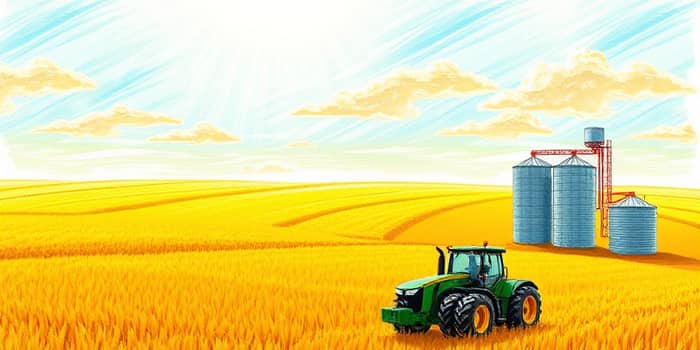
In recent years, global food costs have soared, reshaping markets and investor strategies. Since 2019, the cost of groceries and dining out has climbed sharply, driven by multifaceted challenges. Analysts attribute a 31% increase in retail food prices to factors such as pandemic aftermath, weather extremes, supply chain hiccups, and evolving trade policies. This surge has strained household budgets and spurred demand for investment alternatives. Amidst these pressures, agriculture stocks have emerged as a compelling opportunity, offering investors a way to align portfolios with essential economic trends and hedge against inflation and volatility.
Consumers face sticker shock at grocery aisles, while farmers and agribusinesses navigate volatile input costs. Yet for forward-looking shareholders, this volatility can translate into opportunity. By examining how food inflation ripples through production chains, one can identify companies positioned to capitalize on rising prices and growing global demand.
Understanding what fuels food price inflation is key to anticipating market reactions and investment prospects. Several interconnected forces are at play:
Weather extremes, from droughts to floods, have trimmed crop yields, forcing buyers to compete for limited supplies. Meanwhile, geopolitical tensions—particularly the Russia-Ukraine conflict—have disrupted grain flows and fertilizer exports, reinforcing scarcity across key commodities.
When food prices climb, agribusinesses can translate that pressure into improved financial metrics. Producers, suppliers, and distributors often enjoy higher commodity and input prices, which can boost profit margins when managed effectively. Beyond farm gates, the ripple effects drive demand across the sector:
Integrated agribusiness players, with both upstream production and downstream processing, can leverage price swings more holistically, smoothing out volatility. Corporate balance sheets strengthened by strategic acquisitions and global footprints have further bolstered resilience.
Examining the latest figures provides a snapshot of the landscape as of mid-2025:
These data points underscore the powerful connection between commodity inflation and share price movements. Investors can use such metrics to anticipate earnings cycles and quarterly performance surprises.
Not every company benefits equally. Investors should assess exposure, product mix, and geographic reach when selecting names. Leading the pack are:
Each of these companies operates with varying degrees of leverage to commodity prices, offering distinct risk-reward profiles. Careful research into balance sheets, debt levels, and dividend yields can help gauge which names align best with individual investment strategies.
While the sector outlook appears promising, investors must weigh several factors before committing: not all companies benefit equally—performance hinges on operational efficiency, debt burdens, and global diversification; commodity price volatility can erode margins if input costs spike faster than selling prices; regulatory changes, subsidy reforms, or shifts in trade policy can rapidly alter competitive dynamics; climate risks, including drought and floods, continue to threaten supply stability and profit forecasts. Moreover, retail food prices tend to be less volatile than farm-gate values, meaning investors must track both levels to fully understand market signals. Monitoring disease outbreaks and policy announcements is essential for timely risk management.
Looking beyond short-term spikes, the agriculture sector offers long-term sustainable growth potential as global populations expand and resource constraints intensify. Mega-trends such as the adoption of precision agriculture technologies, the rise of regenerative farming practices, and growing demand in emerging markets will shape the sector’s trajectory. Additionally, shifts toward plant-based proteins and alternative ingredients promise to diversify crop demand and unlock new opportunities for innovative agribusinesses.
To capitalize on these dynamics, investors should maintain diversified exposure across producers, inputs, equipment makers, and processing firms. Exchange-traded funds focused on agriculture themes can offer broad coverage, while select single-stock positions may provide targeted growth linked to specific sub-sectors or regions.
To navigate this dynamic landscape, start by tracking commodity price indices and quarterly earnings reports to stay informed about supply-demand shifts. Analyze company financials, focusing on balance sheet strength and debt levels, as well as dividend histories to gauge resilience. Monitor trade policy, subsidy changes, and environmental regulations for potential headwinds. Combining disciplined fundamental analysis with real-time market alerts will help you manage risk and seize opportunities effectively.
Food is a universal necessity, and as prices rise, agriculture stocks often mirror those gains with margin improvements for producers and suppliers. Integrated agribusiness players, with global reach and diverse operations, can turn price pressures into profitable outcomes. By understanding the drivers of inflation, selecting well-positioned companies, and employing risk-aware strategies, investors can harness the resilience of the agriculture sector. Amid broader economic and geopolitical challenges, this industry stands as both a crucial pillar of global stability and a promising frontier for long-term investment opportunity.
References













